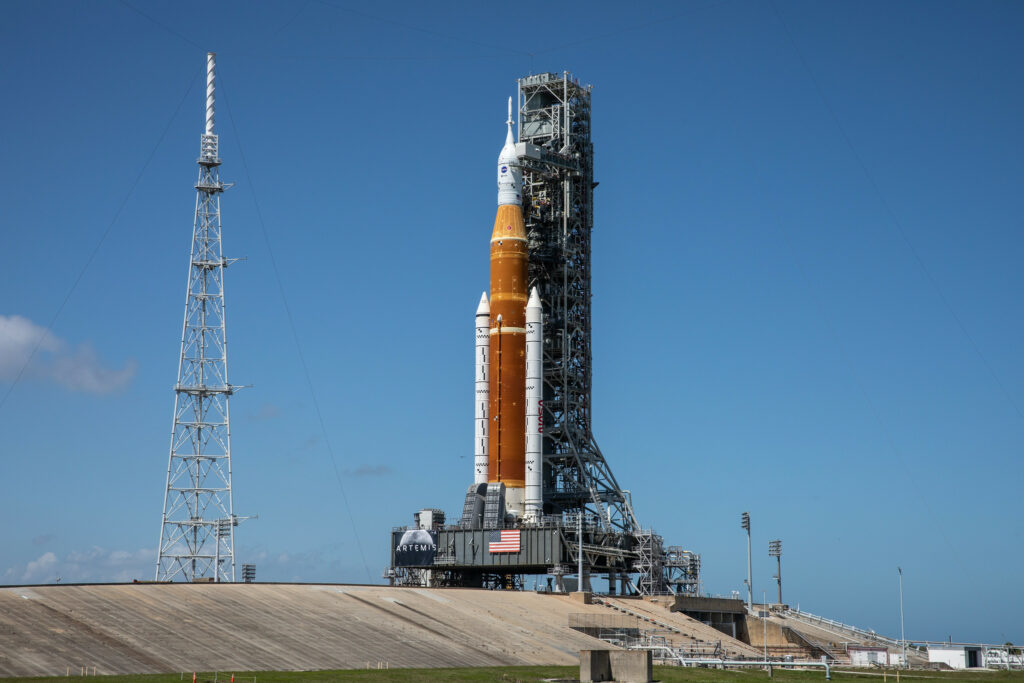On April 14, NASA engineers made a new attempt to hold a dress rehearsal for the launch of the super heavy SLS rocket. However, they again failed to complete the procedure due to a number of identified technical problems, one of which was the leakage of hydrogen fuel.

The dress rehearsal of the SLS launch provides for the complete refueling of the rocket with fuel components (liquid oxygen and hydrogen), followed by the preparation of the pre-launch countdown procedure. After that, the carrier will be returned to the Vehicle Assembly Building for final operations to prepare it for launch as part of the Artemis I mission. It is currently planned for the summer of 2022.
The first attempt to conduct the procedure was made on April 4. However, it had to be interrupted even before the start of refueling the rocket due to problems with the mobile launch platform. The second attempt took place the next day. This time, the engineers managed to fill the first stage of the rocket with oxygen about half — however, due to problems with the valves, they could not start refueling it with hydrogen.
The third attempt to refuel the SLS took place on April 14. Due to a number of technical problems, engineers suspended and then resumed oxygen loading several times. Then they started refueling the first stage with liquid hydrogen. Unfortunately, this time NASA failed to complete the operation. After detecting a hydrogen leak in the umbilical cord connecting the first stage to the mobile platform, engineers decided to stop refueling. At that time, the tank with liquid oxygen of the first stage was filled by 49%, the tank with liquid hydrogen — only by 5%.
Despite the failure, NASA representatives said that the engineers managed to fulfill most of the test goals and get a good set of data. Currently, it is unknown when a new attempt to refuel the SLS will take place.
Recall that NASA recently announced its intention to support the creation of a second lunar lander for the needs of the Artemis program.
According to https://spacenews.com
Follow us on Twitter to get the most interesting space news in time
https://twitter.com/ust_magazine

